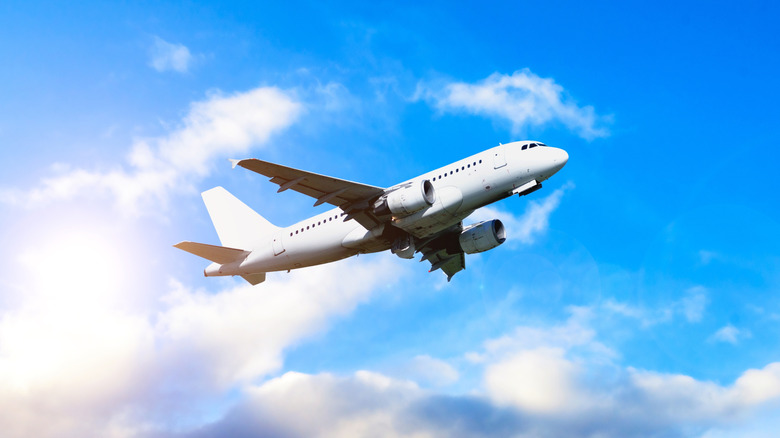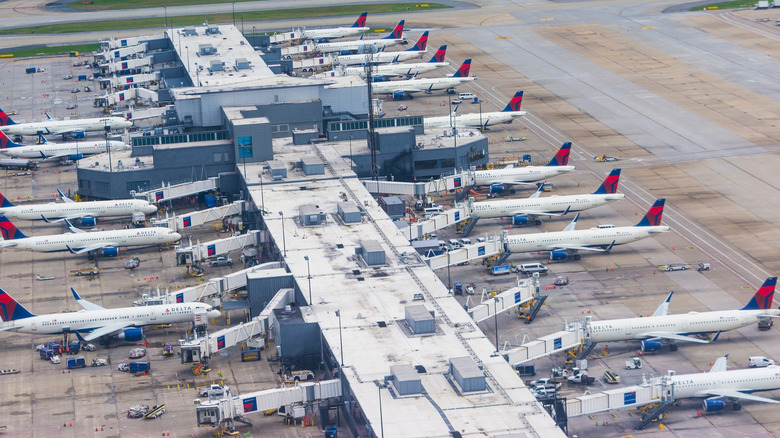The Surprisingly Logical Reasons Airplanes Are Almost Always The Same Color
There are a lot of mysteries about planes that you may ponder during a long flight, particularly if you're raw dogging it (taking the entire flight with no entertainment of any kind). Maybe you've tried to understand what causes turbulence or questioned why that window seat you booked is actually missing a window. And if you've ever wondered why so many planes are painted white, you may be surprised by the many reasons.
While there are certainly fleets like Air New Zealand's black planes and some with very colorful livery, most commercial planes are largely white, and the first reason is that it keeps the plane cooler. White reflects light rather than absorbing it, meaning airlines don't have to spend as much money keeping the interior of the plane at a temperature that's comfortable for the passengers and crew. The temperature difference was on display when the Air France Concorde was painted blue for two weeks to promote Pepsi in 1996, and it couldn't maintain cruising speeds for as long without the risk of overheating. The reflective properties of the white paint are also helpful in protecting against solar radiation damage to delicate components in the plane.
Other reasons many airplanes are painted white
You may not know this, but early on in commercial aviation, planes were left either metal or chrome. However, it's easier to see debris and dirt when the exterior is left bare, so planes had to be polished often to keep customers from noticing. (Of course these days, you may be more worried about the dirty surfaces inside a plane, rather than the outside.) Yet another reason that planes are often white is that many airlines either lease or rent their planes to other companies, and it's easier to change the livery that way.
Another reason that planes are often painted white has to do with weight. Paint on a plane can add over 1,000 pounds to a vessel's weight load — if you've ever lugged paint cans home from a hardware store, you know how heavy just a few of them can be. As it turns out, darker-colored paints are often thicker and heavier than white paint, adding unnecessary weight to the aircraft. Moreover, white paint doesn't fade as quickly as other colors, meaning it doesn't need to be repainted as often, and it's generally cheaper to buy.
It's also easier to see any cracks or damage in white paint so they can be fixed faster. Finally, planes are often painted white in an effort to prevent birdstrikes, as strange as that may sound. While, from the ground, a white plane may seem to blend in with the clouds, birds that are close can see it in contrast to its surroundings and head in another direction.

